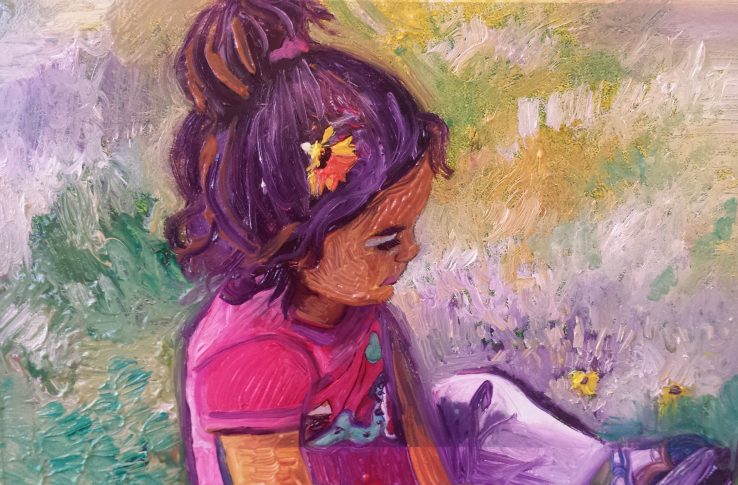by Maria Aurora Nunez
*Content posted to the blog represents the views of the author only and not those of Health Law in Canada, its Board members or affiliates or IHPME*
In 2018, Stephen Hawking predicted that “we are now entering a new phase of what might be called self-designed evolution”.[1] Genetic editing, starting with the repair of genetic defects, may eventually result in a race of  “superhumans” against which the non-genetically-edited, “unimproved humans […] won’t be able to compete”.[2] While superhumans may be science-fiction, genetic editing of human embryos is already a new reality.[3] Technology, comprising of assisted reproductive technology (ART), is advancing at a rapid speed, faster than advancements in the regulation of ART in Canada.
“superhumans” against which the non-genetically-edited, “unimproved humans […] won’t be able to compete”.[2] While superhumans may be science-fiction, genetic editing of human embryos is already a new reality.[3] Technology, comprising of assisted reproductive technology (ART), is advancing at a rapid speed, faster than advancements in the regulation of ART in Canada.
The world’s first baby conceived by in vitro fertilization (IVF), a type of ART, was born in England in 1978.[4] The first baby conceived by IVF in Canada was born in British Columbia in 1983.[5] At that time, ART was unregulated in Canada. In 1989, in response to increasing public demand, the federal government established the Royal Commission on New Reproductive Technologies to study the social, ethical, legal, health and economic implications of ART. In 1993—after four years, $28 million dollars and consultations with roughly 40,000 Canadians—the Royal Commission issued its final report Proceed with Care. The report contained 293 recommendations on what policies and safeguards Canada should adopt to balance the benefits of ART with its issues, including dangerous and discriminatory practices. The report concluded that there was an urgent need for federal legislation to limit the use of ART and a body to oversee, licence and monitor the use of ART: “The field is developing too rapidly, and the potential for harm to citizens is too great, for Canada’s response to be delayed, fragmented, or tentative”.[6] In 1995, the Minister of Health called for a voluntary moratorium on nine practices, such as sex selection for non-medical reasons, commercial surrogacy arrangements and retrieval of eggs from cadavers or fetuses. However, most IVF clinics did not adhere to the moratorium.[7] In 1996, Bill C-47, the Human Reproductive and Genetic Technologies Act was introduced; however, it died in 1997 when a federal election was called.[8][9]germline genetic alteration[10][11] Whereas almost 30 years ago Canada welcomed its first IVF-baby, today it is estimated that over 8 million babies have been born from IVF worldwide.[12] However, regulation of ART in Canada remains fragmented.
Health Canada intends to strengthen the AHRA by bringing into force dormant sections and developing regulations for the: (i) use of donor gametes, (ii) reimbursement of expenses incurred by donors and surrogates and (iii) administration and enforcement. The public has been provided an opportunity to give feedback on the proposed AHRA changes. On January 10, 2019, public consultation closed. [13] Bringing sections of the AHRA into force could help to provide clarity for Canadians on the use of ART services and better protect the health and safety of Canadians. We will have to wait to see what happens to the regulation of ART in Canada, tomorrow and onward.
[1] See e.g. Health Canada, Consultation on proposed assisted human reproduction regulations (Ottawa, Health Canada), online:<https://www.canada.ca/en/health-canada/programs/consultation-assisted-human-reproduction-regulations.html> (Date modified: 30 November 2018).
[4] “The world’s first test tube baby: reaction by Canadians”, CBC Digital Archives (13 August 1978), online: <https://
[5] “Canada’s very own test tube baby”, CBC Digital Archives (10 February 1984), online: <https://www.cbc.ca/archives/entry/canadas-very-own-test-tube-baby>.
[6] Canada. Royal Commission on New Reproductive Technologies, Proceed with Care: Final Report of the Royal Commission on New Reproductive Technologies (Ottawa, Minister of Government Services Canada, 1993) at Preface xxvii, 115.
[7] Standing Committee on Health, Evidence Meeting, 37th Parl, 1st Sess, No 17 (29 May 2001) at 1125-55, 1240-45.
[8] Bill C-47, An Act Respecting Human Reproductive Technologies and Commercial Transactions Relating to Human Reproduction, 2nd Sess, 35th Parl, 1996 (first reading 14 June1996).
[9] Bill C-56, An Act respecting assisted human reproduction, 1st Sess, 37th Parl, 2002 (1st reading 9 May 2002); Bill C-13, An Act respecting assisted human reproduction and related research, 2nd Sess, 37th Parl, 2002-2003 (2nd reading 7 November 2003).
[10] Bill C-6, An Act respecting assisted human reproduction and related research, 3rd Sess, 37th Parl, 2004 (assented to 29 March 2004); Assisted Human Reproduction Act, SC 2004, c 2, ss 5-6.
[11] Reference re Assisted Human Reproduction Act, 2010 SCC 61, [2010] 3 SCR 457.
[12] See e.g. Susan Scutti, “At least 8 million IVF babies born in 40 years since historic first” (3 July 2018), online: CNN < .
[13] See e.g. Health Canada, Consultation on proposed assisted human reproduction regulations (Ottawa, Health Canada), online:<https://www.canada.ca/en/health-canada/programs/consultation-assisted-human-reproduction-regulations.html> (Date modified: 30 November 2018).
Related News

Sign up for IHPME Connect.
Keep up to date with IHPME’s News & Research, Events & Program, Recognition, e-newsletter.
Subscribe to Connect Newsletter
Get in Contact
Communications
Marielle Boutin
Email Address: ihpme.communications@utoronto.ca





